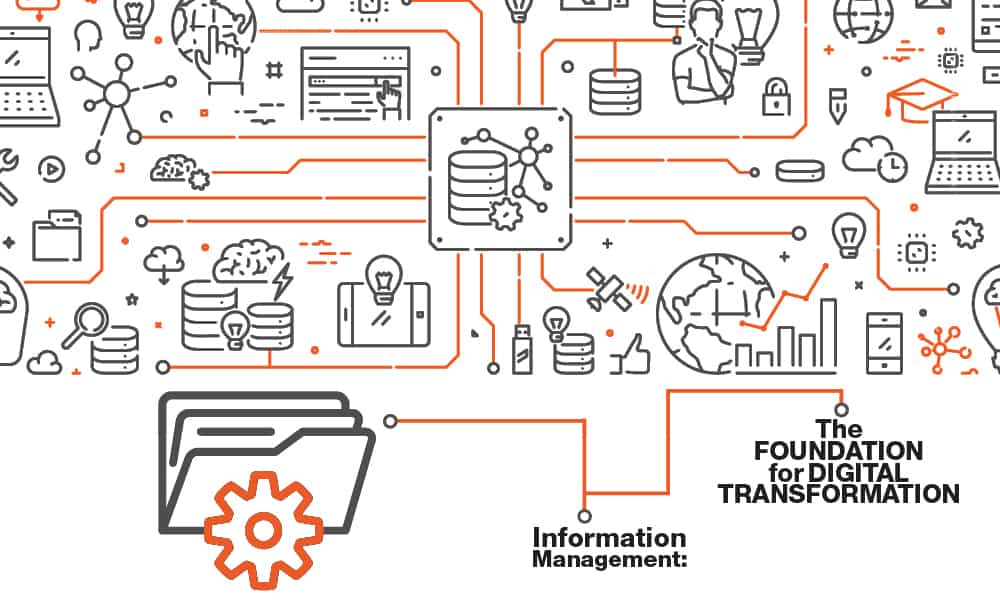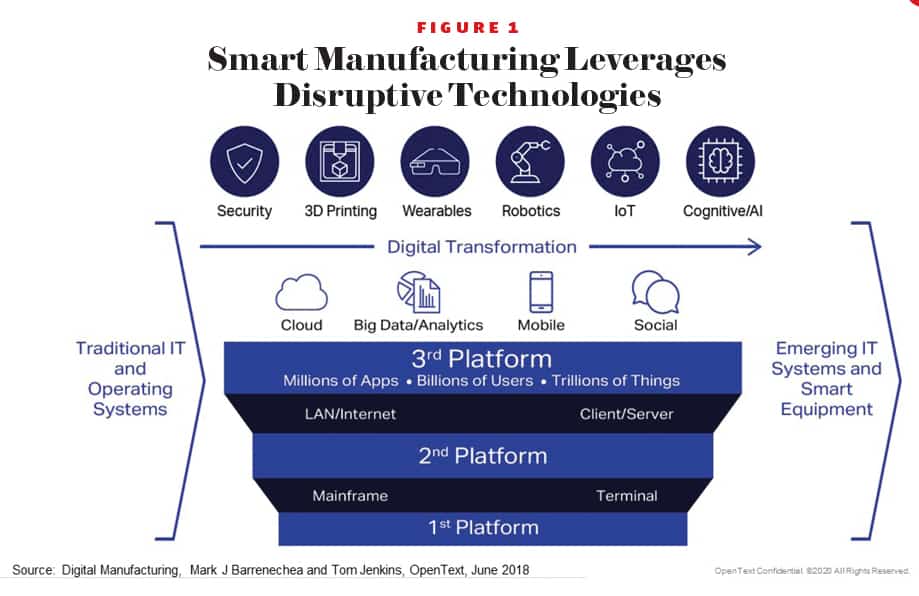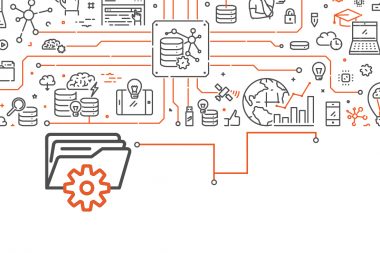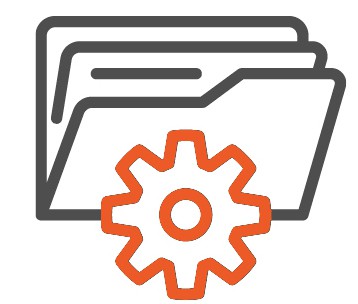
Carving out manufacturing’s path to success post-pandemic. By Tom Leeson

There have been many lessons from the COVID-19 pandemic. Chief among them for manufacturers is that businesses must be digital, and many are not where they need to be in their digital transformation journeys. A recent Manufacturing Leadership Council survey found that 53% of respondents expect to accelerate their digital transformation initiatives as a result of their experiences1. But transformative technologies can only succeed when there’s a proper foundation in place to enable them. That foundation is Information Management (IM).
Prior to COVID-19, manufacturers were already dealing with very challenging business environments, increasing supply chain complexity, and expanding regulation. Now, months into the pandemic, many companies have proven resilient, with the ability to quickly pivot and adapt. Specifically, digitally astute organizations have implemented remote work quickly, built resilience into their supply chains, and increased the automation of processes to overcome workforce challenges.
Organizations that lead the pack in digital transformation initiatives have realized one important thing: transformation is less about the technology and more about the data.
Research firm IDC says, “Technologies including cloud, mobile, big data and AI, as well as blockchain architectures, enable new services and models such as intelligent predictive maintenance and as-a-service, outcome-based business models. In this digital economy, information and analytics are fueling every business process. With this in mind, manufacturers are realizing the importance of employing advanced enterprise information management (IM).”2
IM has been around for some time. In essence, it’s the platform that captures, governs, exchanges and enhances information, ensuring that it’s both available and secure internally and across trading partner and supply chain networks. IM provides the information that transformative technologies need to help optimize digital processes end-to-end.
The pandemic has exposed the weaknesses of manufacturers that have not fully implemented an enterprise IM strategy. For example, some companies may have been able to quickly shift staff to remote work, but although they’ve delivered connectivity, their solutions have struggled to deliver the information workers at home need to do their jobs. Also, processes that are still heavily manual and document-based, such as maintenance, have not translated well into this new environment.
So, how can an effective IM strategy help manufacturing organizations gain full value from the transformative technologies available today?
Drowning in a Tsunami of Data
Pandemic or not, the amount of information created within manufacturing continues at truly astonishing proportions. Taking just one of the technologies transforming manufacturing, IDC estimates that connected IoT devices will generate over 70 zetabytes of data by 20253. The application of IoT-enabled sensors and cameras to production lines and supply chains provide a huge opportunity to increase visibility, control, and efficiency.

However, those benefits of IoT are only realized when you can use the data they produce. The real transformative nature is only fully achieved when data from IoT is combined with data from other technologies, such as AI and blockchain. IDC describes a 3rd platform (Figure 1) bringing together cloud, big data, mobility, and digital experience, that acts as a foundation for the modern business to digitally transform.
This digital revolution has the capacity to generate and collect information on a greater scale than ever before. But it’s caused companies to be overwhelmed with the amount of data created by automation, connectivity, and increased computing power. Data arrives from different places, at different velocities, and in different formats. Companies don’t just struggle with silos of information; many don’t have the ability to manage and derive meaningful insight from these new types of information.
To compete in the digital world, manufacturers must manage and analyze vast stores of information at each stage in the manufacturing process, including product design to manufacturing, logistics and distribution, asset management, and sales and aftermarket support, as part of a larger system of ecosystem applications. Without an IM platform in place, it can be difficult for organizations to move forward. Currently, only 1% of digital information is actually analyzed4.
Remote Work and Collaboration
Remote work shot to the top of every CIO’s agenda during COVID-19, with the initial focus on connectivity for home workers. Now that it appears remote work is here indefinitely, companies need to shift that focus to information provision. Research has shown that technology and infrastructure are the biggest barriers to workforce productivity. One report found 42% of enterprises had at least half of their distributed workers suffering consistently poor experience with the SaaS apps they use to get their jobs done5.
If remote work is embedded in new business models going forward then simple connectivity must be replaced by security, information access, and application performance. For example, engineers and product designers need high performance access to their graphics-intensive applications but it’s imperative that the information, containing the company’s intellectual property, is always fully protected. This becomes even more important when you consider the distributed nature of production processes, such as automotive where ecosystems of OEMs and suppliers collaborate and share information so each can complete their element of production.
As more work moves to distributed digital environments, integrating IM into collaborative platforms such as Microsoft Teams will make it easier to access relevant documents while maintaining information governance and compliance policies.

To compete in the digital world, manufacturers must manage and analyze vast stores of information at each stage in the manufacturing process.
The Role of the Cloud
With fewer employees working on-site and online communication and transactions growing exponentially during the pandemic, the cloud is increasingly becoming the platform of choice for manufacturing companies. In fact, a survey from OpenText and IDC found that 70% of companies across multiple manufacturing sectors are leveraging cloud-based, Business 2 Business (B2B) networks in their business operations6.
Many companies choose the cloud because it delivers uninterrupted access to content both internally to departments and externally to partners and suppliers, while ensuring consistent availability. It also brings agility, flexibility, cost savings, and competitive advantage. For these reasons, the cloud will continue to play a key role in enabling digital transformation in the manufacturing industry.
For example, British American Tobacco (BAT) leverages cloud-based solutions to enable greater control and collaboration for all its enterprise HR information. Andy Straw, IT Program Manager at BAT said, “We can now manage all employee files, letters, contracts, and other documents in one place, providing global continuity as employees move around. For the first time, we have a single source of the information we need.”7
How IM Empowers AI and Machine Learning
The emergence and rapid deployment of artificial intelligence (AI) technology is completely transforming the way information is created and handled by manufacturers. AI and machine learning act as the brain that can process information in high volumes, variety, and velocity.
For example, automakers have the unique opportunity to manage corporate information by enabling the following capabilities:
- Conditional decision automation (or automating decision-making processes). This type of automation provides rapid identification and response for well-known and slow-to-change conditions across a variety of processes, including IoT and production health monitoring.
- Algorithmic decision automation (or creating decision support tools). This kind of automation provides business benefits by rapidly predicting upcoming problems or immediate opportunities to act when conditions change continuously and data is highly variable, including IoT use cases, real-time promotions, quality controls, and inventory outage predictions.

Information Management forms the ideal basis to begin to apply the transformative technologies that every manufacturer will need when adapting to the next normal.
COVID-19 exposed the massive problems that are created when access to on-site documentation and processes are broken. Such problems occur when the locations of information and users become physically disconnected and manual processes, such as standard operating procedures, change management, and design reviews fail at scale. By digitizing information, not only can it be accessed in real time, but these manual processes can be automated with Robotic Process Automation. Automated processes and digital documents can also be enhanced and optimized using AI and machine learning.
IM provides the basis for the application of AI and machine learning. It brings information together, integrates the data, and prepares it for ingestion into your AI and analytics solutions. The benefits of this approach include increasing the speed of execution, reducing human errors, creating auditable compliance trails, and allowing the redeployment of staff to higher value work tasks. It ultimately increases worker and customer satisfaction and builds brand loyalty. A recent MLC survey found 42% of manufacturers expect increased use of automation on the shop floor8.
Information-driven Digital Experience
During disruption such as a pandemic, effective and consistent communication is paramount for manufacturers. Companies must communicate with all stakeholders, employees, suppliers, and customers early and often. But to do so successfully, digital experiences need to be adjusted and optimized with relevant digital content and more frequent omnichannel communications.
Moreover, the new levels of digital customer experience necessitated by COVID-19 will have a lasting impact as customers have quickly grown accustomed to the digital experience. In the United Kingdom, for example, while 90% of buyers were researching car purchases online before the pandemic, the full vehicle buying journey — through purchase and delivery — is now following a similar trajectory 9.
Organizations must enable employees to be more productive while listening to their customers to derive insight to drive the right business decisions. It starts with listening and understanding what customers really need, and that insight can only come from data. An enterprise IM platform allows all customer data to be captured across channels and developed into insight to drive communications and customer experience.

The pandemic has also been a stress test for supply chains and their global networks, exposing inherent weaknesses and highlighting the need for continuous improvement to sustain efficiencies and remain competitive.
The Adaptive Supply Chain
The global economy has been upended by the COVID-19 pandemic. Quarantines, shutdowns, and trade disruption have all significantly impacted supply chains across the world, and they will not just return to normal automatically. Deloitte describes the pandemic as a black swan event that will have reverberations across the industry and impact supply, demand, liquidity, and work for years to come10.
Building an adaptive supply chain requires three key capabilities: the ability to respond quickly to sudden changes in demand; a deployment strategy that can adapt to shifts in key markets, labor rates, and other areas; and a strategy for responding resiliently to unforeseen disruptions, whatever the cause11. The pandemic has also been a stress test for supply chains and their global networks, exposing inherent weaknesses and highlighting the need for continuous improvement to sustain efficiencies and remain competitive.
Timely and relevant information sharing underpins the type of B2B relationships that encompass the modern global supply chain. By enabling end-to-end supply chain visibility, flexible and scalable ways to trade, and collaborating and growing digital partners and employee ecosystems, IM better prepares supply chains to be more efficient and resilient for the turbulent times that may lie ahead.
Cyber Resilience
It’s difficult to think that people would exploit a terrible event like COVID-19 but that’s exactly what cyber criminals around the world are trying to do. The pandemic caused a lot of companies to re-examine cybersecurity strategies, especially as they rapidly shifted to remote work. Recent research found 83% of firms admit that they struggle with the security of their remote working systems12.
It’s been a long time since organizations were able to keep all their valuable assets safe behind the corporate firewall. As manufacturers become more collaborative with their ecosystems of suppliers and customers, the outside-in view of security has been replaced with an inside-out approach, leaving many companies asking themselves how to safely allow people outside the organization to have access to corporate information.

Organizations should remember that it’s not about if the network will be breached, it’s about when.
COVID-19 simply increased the attack surface that cybercriminals have available. While the need for access to information has not abated, it has changed shape. Cybercriminals are exploiting employee devices running on home networks with fewer security measures. But security capabilities embedded in modern IM platforms can help address these new cyber security threats.
Through endpoint protection, organizations can secure every endpoint regardless of location. It incorporates real-time, anti-phishing, and advanced threat intelligence to protect employees from phishing attacks, malicious websites, ransomware, and other threats. In addition, Identity and Access Management (IAM) capabilities authenticate and authorize every person, system or thing connecting to the network. As a cloud service, every login, API call, and access request are remote and can be vetted using strong, adaptive, and multi-factor authentication as appropriate.
Organizations should remember that it’s not about if the network will be breached, it’s about when. Cybersecurity is increasingly becoming part of an overall cyber resilience strategy, which leverages the highest levels of protection to stop an attack, but also includes how quickly a company can respond and recover when their systems are breached. IM has a major role to play for cyber resilience by minimizing the amount of information held and enabling more stringent security to be applied to more sensitive information.
Why Transformative Technologies Rely on Information Management
Within manufacturing, vast amount of data are produced from best in class applications and held in departmental silos. Information can be difficult to find, manage, and share. Furthermore, the integration of data and information allows applications and users to benefit from a more holistic view across siloed applications. An IM platform deployed in the cloud can provide seamless integrations and automation that leverage the productivity of best in class applications while IM capabilities keep information compliant and secure.
International pump manufacturer, SEEPEX, has transformed its information flow with IM. “We needed a solution that would allow us to store all documentation in one place, including email, which could be accessed from SAP, OHT, other applications and from the application itself,” said Roland Rottländer, SEEPEX data processing manager. “This would provide exactly what we needed, a single, enterprise-wide document source to around 800 users. Content would be available regardless of the original document source, from anywhere, to help us meet our goals to deliver business growth, outstanding customer service and customer retention through faster processing speeds, agility, reduced costs and compliance.”13
By breaking down the silos and making information available where and when required, IM forms the ideal basis to apply the transformative technologies that every manufacturer will need when adapting to the next normal as we emerge from this pandemic. M
1 COVID-19-M4.0 Inflection Point. MLC COVID Survey Results, June-20
2 IDC Digital transformation in Manufacturing: Creating an intelligent, connected and secure information advantage, June 2020
3 https://futureiot.tech/idc-forecasts-connected-iot-devices-to-generate-79-4zb-of-data-in-2025/
4 https://www.mckinsey.com/business-functions/mckinsey-digital/our-insights/straight-talk-about-big-data
5 https://www.riverbed.com/blogs/15-surprising-stats-on-remote-work-due-to-covid-19.html
6 https://www.opentext.com/info/intelligent-supply-chain/b2bintegration/b2bmanagedservices
7 https://www.opentext.co.uk/file_source/OpenText/Customers/en_US/PDF/BAT-SS-0418-EN.pdf
8 COVID-19-M4.0 Inflection Point. MLC COVID Survey Results, June-20
9 https://www.thinkwithgoogle.com/intl/en-gb/marketing-resources/industry-perspectives/auto-industry-impact-during-coronavirus/
10 https://www2.deloitte.com/ru/en/pages/risk/articles/2020/covid-19-managing-supply-chain-risk-and-disruption.html
11 https://www.bcg.com/publications/2013/consumer-products-adaptive-supply-chains-building-capabilities-uncertain-world
12 https://www.csoonline.com/article/3572376/report-reveals-how-enterprises-must-adapt-to-secure-remote-work-at-scale.html
13 https://www.opentext.co.uk/file_source/OpenText/Customers/en_US/PDF/seepex-20-en.pdf